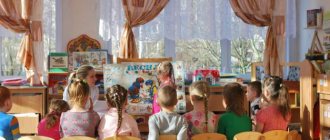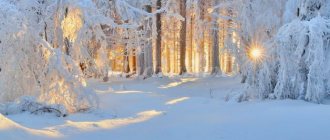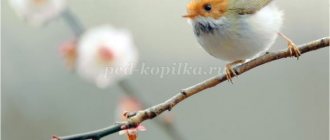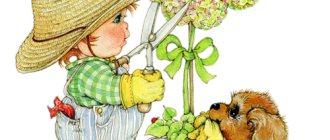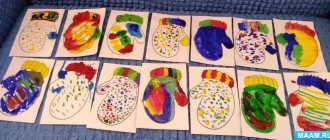Summer walk - excursion in kindergarten. Middle group
Summer fun at a preschool educational institution. Excursion to flower beds
The excursion is intended for children of middle and senior preschool age.
The teacher conducts it during a walk in the summer, but it can also be included as part of a lesson on familiarization with the natural world. Preliminary work: To consolidate the sequence of flowering of plants in the flowerbed, from April to September, a herbarium is created together with the children (dried flowers are glued to a sheet of paper in the order of their appearance) Goal : to activate children’s interest in the world around them, to systematize children’s knowledge about a specific flower - the daisy. Objectives: to evoke in children a positive emotional response to the beauty and diversity of the flower world; Teach children to compare, find common and distinctive features of colors. Develop thinking, observation, memory, and the ability to make inferences. Reinforce knowledge of the names of summer months and flowers. Preliminary work : work in the flower beds on sowing and caring for flowers, asking riddles about flowers, looking at pictures of flowers, getting to know their names.
Excursion progress
Educator: Children, tell me, is it beautiful near our kindergarten? (children's answers) - What especially decorates the territory of the kindergarten now, in the summer? (children's answers) - That's right, flowers. Let's take a tour of the kindergarten territory today and admire the beauty and diversity of the flower world.
What are the names of the places where our flowers grow? - That's right, flower beds. Our kindergarten is decorated with beautiful flower beds with various flowers. Many flowers are familiar to you, I’ll tell you about some today. Educator: Children, flowers are a symbol of happiness, kindness, beauty. Therefore, often, when you want to do something nice for a person, they give him flowers. So today I would like to give you a gift. Admire them, look at them more closely, you can even touch them, smell them, but don’t tear off such beauty, and then we will reflect your impressions in the drawings. (Children admire the flowers, some touch, look at, smell)
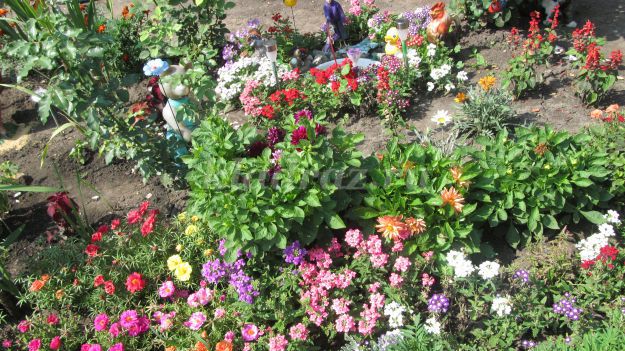
Educator : What time of year is it now? Name the summer months What month is it now? Now name the flowers that bloom in July. And a hint for you in our flower beds. (rose, chamomile, marigolds, calendula...) Educator: Tell me, why do the flowers bloom so beautifully in our flower beds? But in the forest the flowers are not so large.
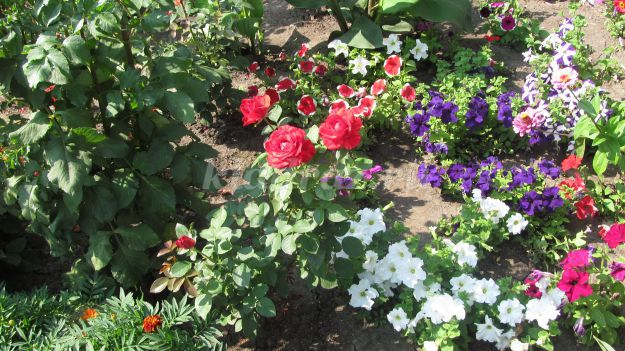
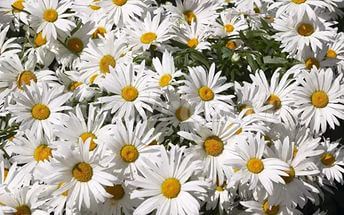
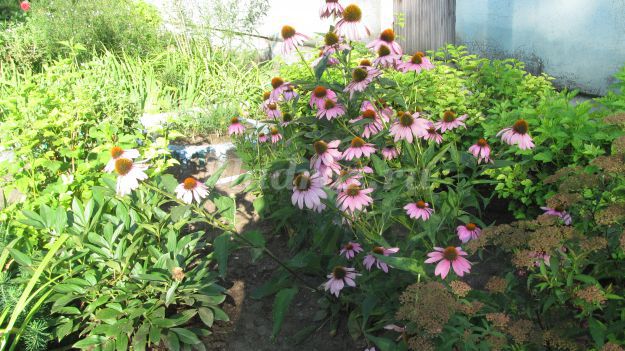
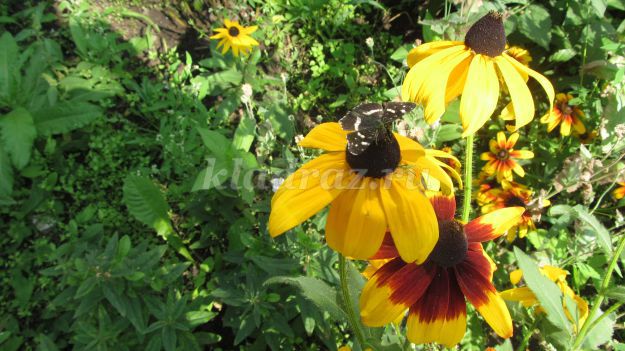
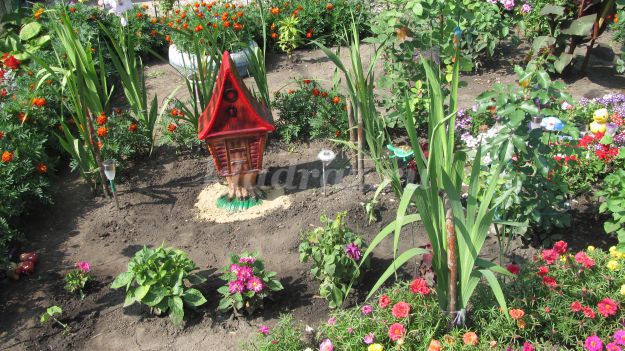
Draw on the asphalt those flowers that you especially like and then our kindergarten will be covered in flowers. The teacher distributes colored crayons to the children. Children draw flowers on the asphalt.
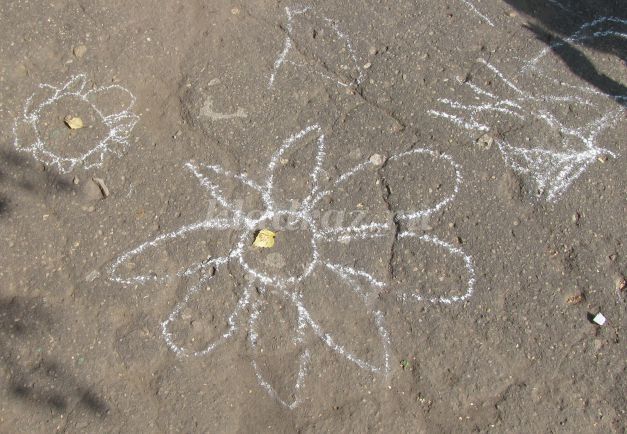
A soundtrack of children's songs will play.
We recommend watching:
Fairy tale day in kindergarten in the middle group in the summer. Scenario Summary of an integrated lesson for children of the middle group on the topic “Summer” Summer entertainment in the middle group of kindergarten. Journey to the Land of Flowers Plan of summer health work in the middle group, taking into account the Federal State Educational Standard
Similar articles:
Summer in kindergarten
Scenarios for summer holidays and entertainment in kindergarten. Middle group
Walk watching the sun in summer. Senior group
Walk watching the clouds. Middle group
Observing insects in the older group in summer
Excursions for the academic year in the senior group. Methodological development (senior group) on the topic
Excursions for the academic year in the senior group.
September.
- Group tour.
Goal: continue to help children, navigate in the group, clarify and activate in speech the purpose of objects in the group. Foster a careful, caring attitude towards objects in the group. Develop a sense of security and self-preservation.
- Targeted walk to a neighboring site.
Goal: to introduce children to the site and equipment. Develop a sense of security and self-preservation. Develop the ability to observe children's games.
- Target walk "Mail"
Goal: to continue to acquaint children with the work of adults, the content of the work of postal workers and postmen; generate interest in the profession.
4. Excursion to the roadway.
Purpose: surveillance of transport. Learn to recognize and name some types of transport. Develop children's powers of observation and memory.
October
1. Tour of the kindergarten.
Goal: continue work on familiarization with preschool educational institutions, involve children in the decoration of the foyer (autumn bouquet); Continue getting to know your employees.
2.Targeted walk to the park.
Goal: to consolidate children’s knowledge about seasonal changes in nature, about leaf fall; to form initial ideas about the adaptability of plants to their environment.
3.Targeted walk to the train station
Purpose: to draw children's attention to the rails on which the train is traveling; explain that the rails are fastened with sleepers. Give the concepts of “railway”, “railway transport “Station” A station is a building in which people buy train tickets to different cities of our country. They can rest. wait for the train to arrive Develop children's powers of observation, attention, and memory.
4. Excursion to the recreation center "VRZ"
Purpose: to introduce the sights of the City; teach to see the beauty of the world around us.
November
1. Excursion to the "Tables" store
Purpose: to consolidate the names of utensils and their purpose; continue to introduce adults to the work, the content of a salesperson’s work, and develop interest in the profession.
2. Targeted walk around the kindergarten.
Purpose: to examine trees, shrubs, grasses; note the changes that have occurred to them. Watching how adults remove leaves and dig up the ground under the bushes.
3. Excursion to the birch grove near the school. Bird watching.
Goal: introduce some birds; consider their appearance; compare sparrow and crow. Foster love and respect for living nature.
4. Purposeful walk to the neighboring garden.
Goal: to introduce the equipment, look at the building, what trees grow around, how and what children play. Develop observation skills
December
- Target walk to the intersection.
Goal: to form ideas about society (sidewalk, roadway, traffic light); continue to familiarize yourself with the basic rules of the road. Reinforce knowledge about the purpose of traffic lights.
- A tour of the nurse's office.
Goal: continue to introduce professions; introduce the content of a nurse’s work; help draw a conclusion about the benefits of a nurse’s work for children.
- A tour of the kitchen.
Purpose: to introduce the equipment; continue to introduce professions; introduce the contents of a cook’s work; cultivate interest in this profession.
- Targeted walk to the Christmas tree installed in the BAM area
Goal: to pay attention to the festive decoration of the Christmas tree, to prepare for the New Year; cultivate an aesthetic sense, the ability to see beauty.
January
1.Targeted walk to the park.
Goal: continue to introduce seasonal changes in nature in winter; teach to pay attention to the beauty of nature; consolidate knowledge about the life of birds in winter, about how a person can help them survive the winter.
2. Target walk to the Road Observation of the snowplow.
Purpose: to introduce a variety of special equipment; broaden children's horizons and develop curiosity.
4. Excursion to the construction site.
Goal: to introduce children to people with construction specialties (bricklayer, welder, crane operator, plasterer); continue to introduce professions; introduce workers to the content of labor; help draw a conclusion about the benefits of the work of builders for people.
February
- Excursion to the road.
Goal: expand children’s knowledge about types of transport, familiarize them with its functions and purpose; continue to introduce professions (driver); develop interest in adult work.
- Excursion to the museum of the kindergarten "Life of the Chuvash"
Purpose: to introduce attributes, aids (books, toys, furniture, equipment, documents); with the history of Chuvashia; remind the name and patronymic of the teacher who is trying to collect material to show and tell to children; develop children's observation and attention.
- A targeted walk to the place where food is delivered to the kindergarten.
Goal: examine the car (body, cabin, wheels); monitoring how products are unloaded; continue to get acquainted with special transport; broaden children's horizons.
5. Excursion to the Kanash Museum of Local Lore.
Goal: visit the museum, look at the attributes and listen to a guide who will tell you about the history of our city.
March
1. Excursion to the pharmacy.
Goal: to continue to acquaint children with the work of adults, the content of the work of a pharmacist; generate interest in the profession.
2. Targeted walk around the kindergarten.
Purpose: to introduce the first signs of spring; note the behavior of birds; expand your vocabulary by using words denoting signs of spring; cultivate a love for nature, the ability to feel its beauty.
3. Excursion to the roadway.
Goal: continue to learn to name and recognize vehicles; assign names of car parts; develop children's powers of observation and memory.
4.Targeted walk to the park.
Goal: observing the changes that have occurred in nature with the onset of spring; develop observation, attention, thinking.
5. Excursion to School No. 7
Goal: to introduce children to school, to interest them in studying in the future and to talk about the importance of knowledge.
April
1. Targeted walk to the Fire Station.
Goal: continue to get acquainted with the work of firefighters, Consider the equipment Transport. develop interest and respect for the hard work of firefighters. Teach how to follow fire safety rules.
2. Excursion to the maple and birch trees.
Goal: to consolidate children’s knowledge that trees do not die in winter, buds remain on the branches from which green leaves bloom; Plants need warmth to grow; teach children to use examination techniques and talk about their observations; arouse interest in tree observations.
3. Targeted walk to the meadow.
Goal: observing the first spring flowers, grass; cultivate love and respect for living nature.
4. Excursion to the laundry.
Goal: continue to introduce children to preschool educational institutions and the laundry; continue to introduce professions; introduce the contents of the laundry washing operator’s work; help draw a conclusion about the benefits of working as a laundry operator for children; cultivate respect for the work of other people.
May
1.Excursion to the park.
Goal: to introduce children to phenomena typical of the height of spring (trees and shrubs are covered with leaves, some have flowers; insects have appeared); teach to find friends among many birds; enrich the vocabulary with new words denoting spring phenomena in nature; cultivate interest in observing spring changes in nature.
3. Excursion to the bread store.
Purpose: to consider the machine that brings bread to the store, how it is unloaded; continue to introduce children to the work of adults.
Summary of the excursion to the autumn park (senior group)
Summary of the excursion to the autumn park (senior group)
Goal: enrich children's knowledge about autumn.
Tasks:
- To consolidate children's ideas about autumn, highlighting its characteristic features.
- Develop children's observation, motor activity, and speech.
- Cultivate a friendly attitude towards peers and adults.
Progress of the lesson.
- In a golden carriage, with a playful horse, autumn galloped through the forests and fields. The good sorceress changed everything, decorated the Earth with bright yellow. From the sky, the sleepy month is surprised by a miracle, Everything around sparkles, Everything shimmers.
- Guys, what time of year is the poem talking about? Tell me, what time of year is it now?
– Name the autumn months in order. How does autumn begin in nature?
- Guys, we are already familiar with the signs of early autumn. And now the most extraordinary and mysterious time of autumn has come - golden, and today we will go to the park to admire the autumn landscape, see how the park has changed and whether it has really become golden. Also play, relax and just be together.
- Let's remember the rules of conduct in the park.
- Guys, what is the weather today?
- Look around. Tell me, which park is it in the fall?
-What is this under your feet? Listen to this rustling noise.
- Guys, what else did you notice? Who knows why the leaves turn yellow and fall off?
– Not only trees grow in the park, but also shrubs. How are shrubs different from trees?
Examining trees and shrubs up close and from afar, in the sun and in the shade.
Self-observation.
– Children admiring the beauty of trees.
– Guys, close your eyes and listen to the autumn sounds and smells. What sounds did you hear? What smells did you smell?
– Try to choose the most beautiful tree for you, and when you come to the kindergarten you can draw it.
Game “Say beautiful words about autumn”
Goal: to develop the ability to select adjectives for a given word.
Game "Three Sheets"
The teacher lays out three different sheets of paper in front of the children. The child must name them and say where they lie.
For example, an oak leaf is between a maple and a birch leaf. The maple leaf is to the right of the rowan leaf and to the left of the oak leaf.
- Guys, do you think the park is welcoming to you? How are you feeling, what is your mood?
“If you feel good, then the park is happy with you.” Always come here as if you were visiting a friend, take care of him.
– Our excursion has come to an end and it’s time for us to go to kindergarten. But we will definitely visit our park again.
